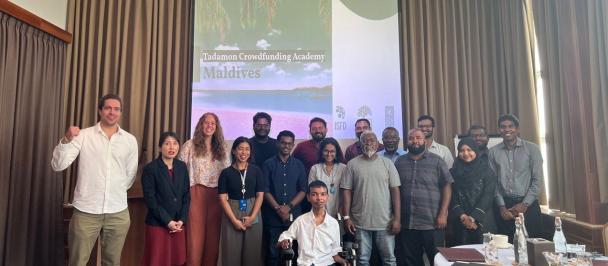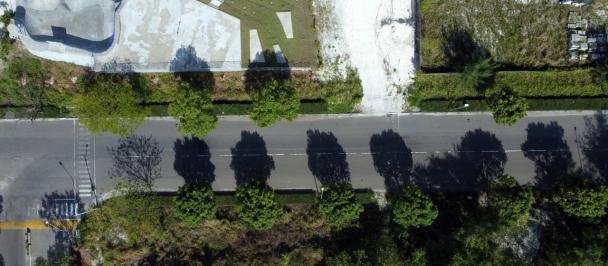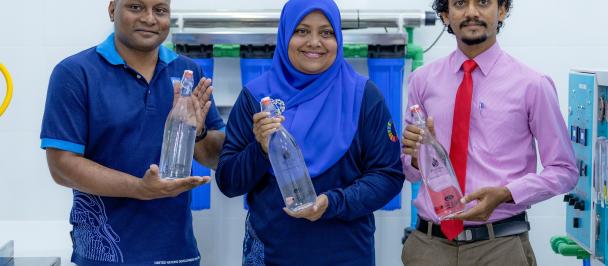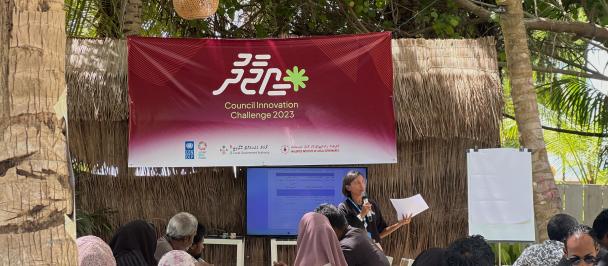By Fathimath Lahfa, Head of Exploration | Aishath Nayasheen Ahmed, Head of Solutions Mapping | Hussain Rasheed, Head of Experimentation
Beyond Lines, Points and Polygons: Maps that amplify collective voices of communities.
November 9, 2023
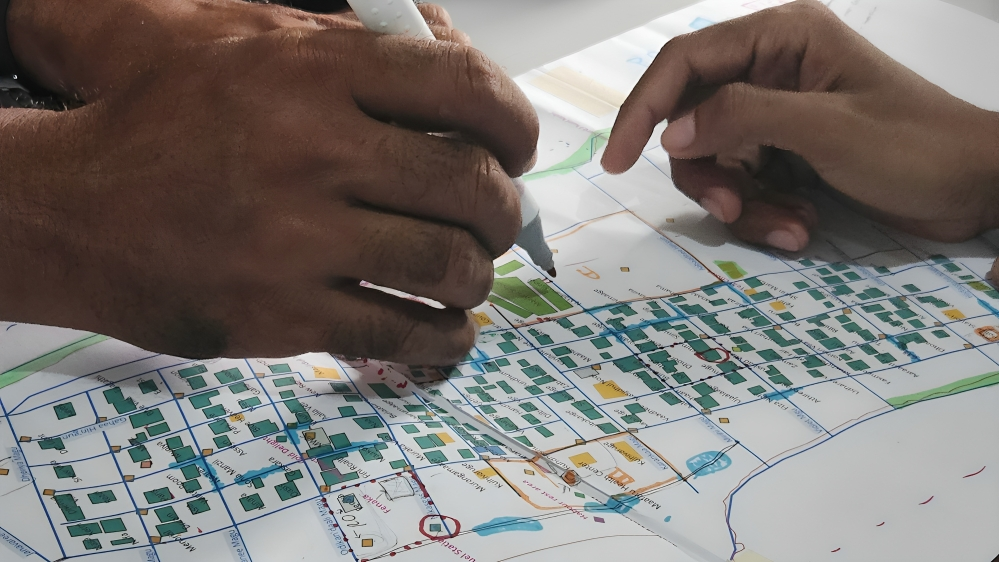
Participants of the crowd mapping workshop, validating the base maps in Noonu Maafaru.
Solving the most complex development challenges requires new ways of thinking about problems and solutions as well as new ways of collaborating and working together. It requires us to learn. UNDP Accelerator Labs implement short learning cycles to generate intelligence that can feed into the organization’s work. This is accomplished through four key activities - sensing, exploring, testing and growing. The efficacy and consonance of what may at first seem like rather unconventional functions, are best explained through an example of our work.
Sensing and Exploration
The Accelerator Lab in Maldives embarked on a learning journey with 15 other Labs around the world, largely focussed on exploring the use of collective intelligence as a tool for tackling the climate crisis.
What is Collective intelligence, you may wonder? Simply put, it is the process by which groups of people share knowledge, data and skills, often aided by technology to address a societal challenge.
Climate change in the Maldives, although extremely relevant, proves a dreary theme. The extreme low-lying nature of the country’s topography makes the effects of climate change potentially devastating to a population dispersed sparsely across over 180 inhabited islands. For our discovery research, we got out of the building and talked to communities, local councils and decision-makers.
There is no denying that the economic and human impacts of climate change and sudden disasters like storms, floods, and heatwaves, as well as slow-onset disasters such as erosion, water and soil salinity and crop losses, are already being felt.
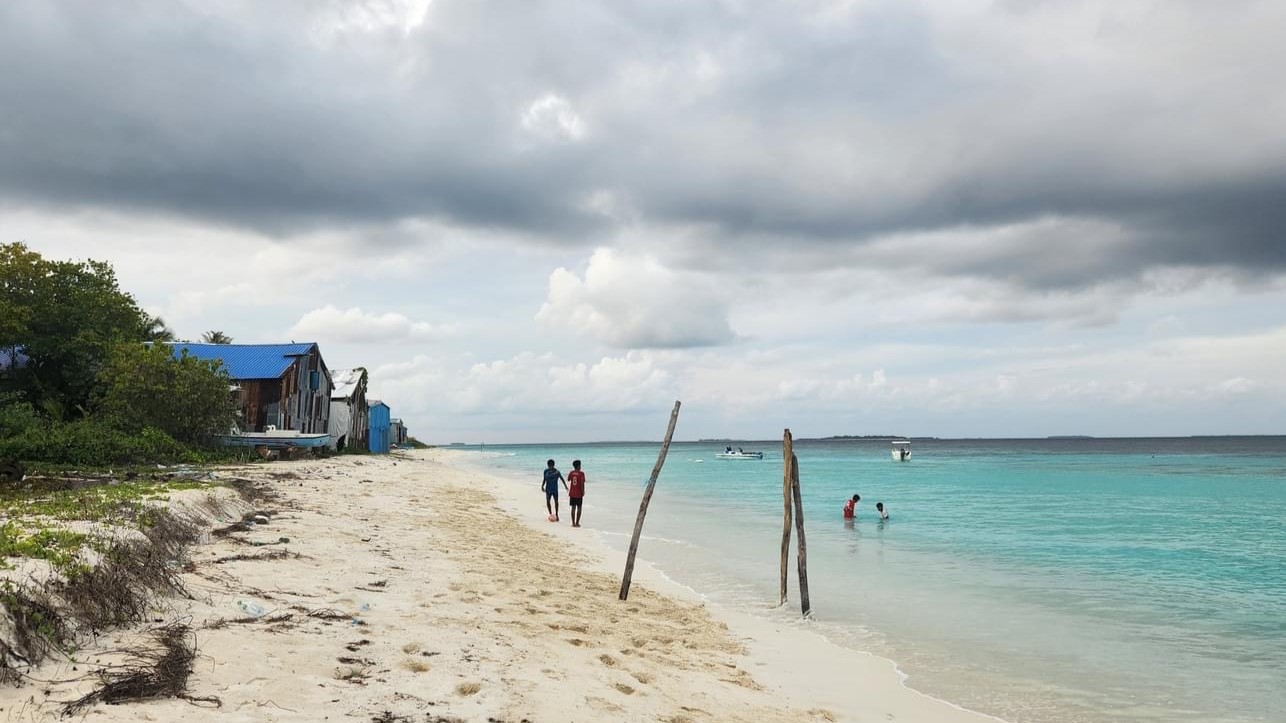
People walking on a beach in Ihavandhoo.
Ihavandhoo is one of the islands that experienced a swell wave in recent years, causing major flooding on one side of the island.
“The incident caused great fear in the community because it’s the worst such incident in recent memory and we fear it might become more common. And we realized the importance of having a disaster preparedness and response plan in the island, which we don’t.’’ A member of Ihavandhoo Women's Development Committee shared with us.
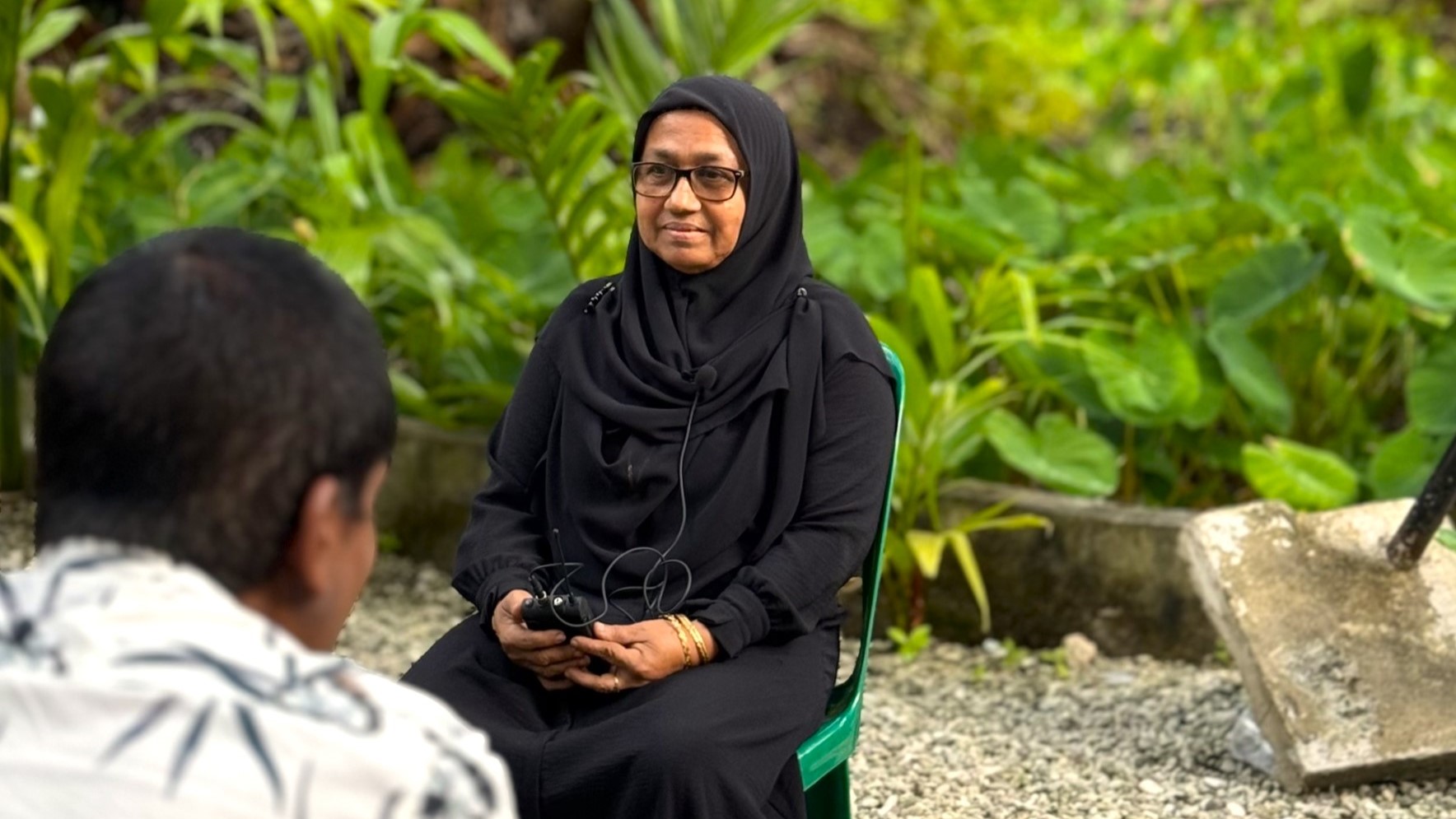
Hawwa Ahmed Didi recalls frequent episodes of flooding and the struggles faced by her family due to flooding in Fuvahmulah.
Of course, as it stands, these effects are unfortunately on course to increase exponentially and seriously threaten the livelihoods throughout this island nation. The challenge is a mammoth. Therefore, it was important to identify few gaps, where we need to focus our attention.
The Doing Gap
Communities are aware of the effects they are facing due to climate change and of their vulnerability to disaster risk. The attribution of the causes may not be so simple, but they believe with conviction that some of the development choices exacerbated existing vulnerabilities.
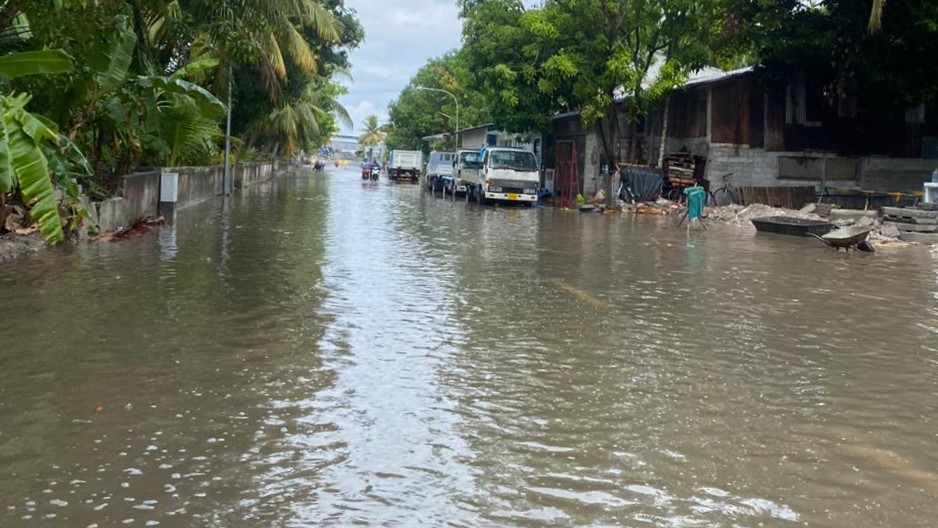
Flooding after rainfall, in Fuvahmulah.
“Degradation of the wetland ecosystem is one of the key impacts of climate change in Fuvahmulah. Extreme weather conditions lead to severe flooding of the wetland. Unfriendly agricultural practices, modifications to the wetlands and taro plantations like building boundary walls to separate the fields have disturbed the natural water flow and contributes to the flooding as well. However, many do not seem to associate these impacts with climate change are unaware how our own actions are making things further worse.” - Youth from Fuvahmulah City
That said, many feel their voices and narratives are not loud or powerful enough to influence action. The sense of powerlessness we sensed from the communities was stark. Thus, it was decided that our Collective Intelligence value proposition needed to - first and foremost - empower the community.
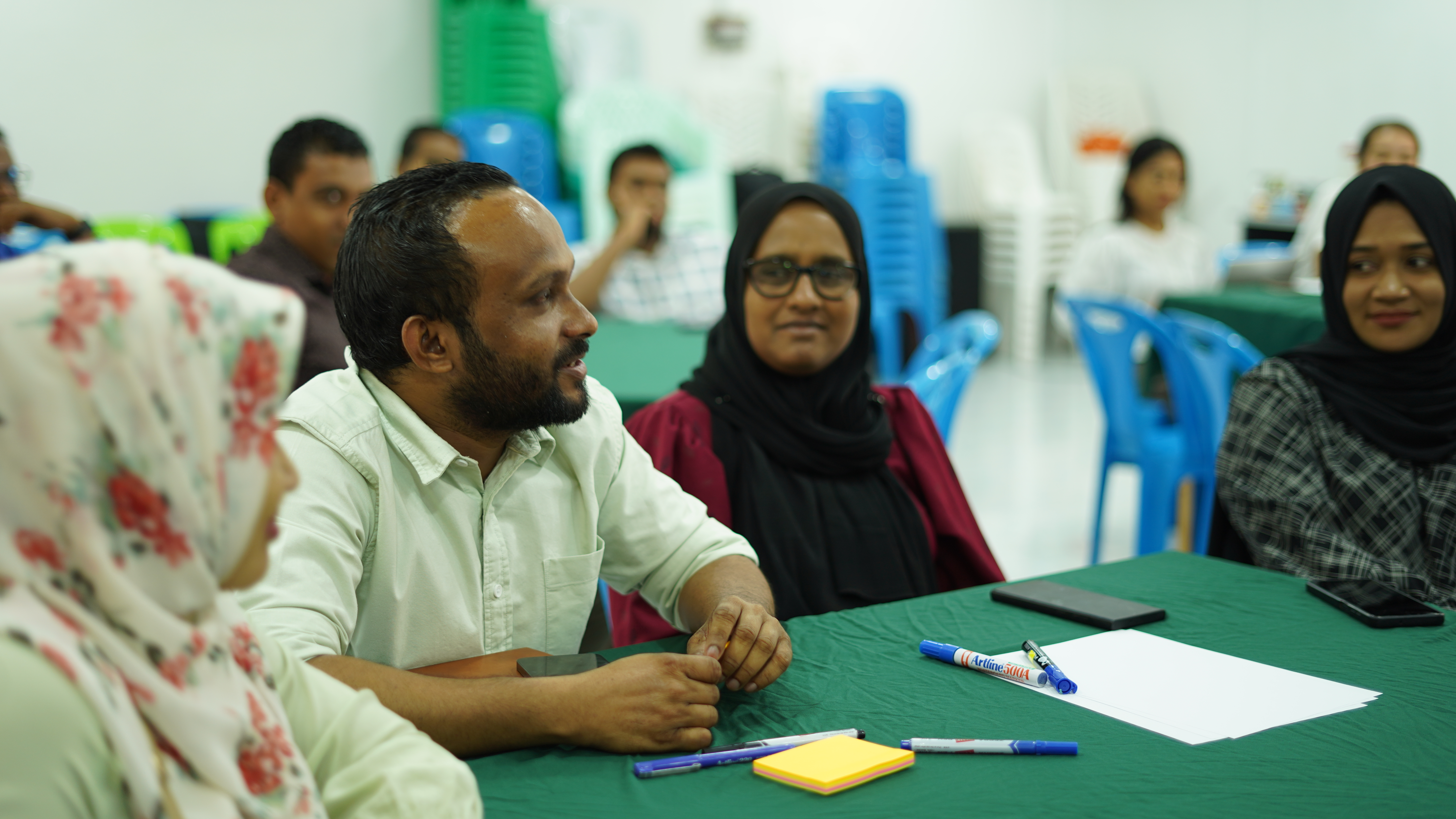
Community members share how climate change affects them and their vulnerability to disasters.
The Data Gap
The uniqueness of each island necessitates a localized, or rather a hyperlocal approach, to risk reduction and adaptation. Hyperlocal action requires hyperlocal data, and we know the data ecosystem for Disaster Risk Reduction (DRR) and Climate Change Adaptation (CCA) is particularly weak.
Improving data at the island level demands more accurate, geo-referenced data. It needs go beyond broad land use features and capture conditions of the built environment. But in a dispersed geography, collecting and maintaining such data is challenging and time consuming.
Testing and Experimentation
Our Collective Intelligence (CI) experiment needed to test both data and the community empowerment aspects. We decided on participatory mapping as a methodology that can combine citizen-generated with existing spatial data. Participatory mapping allows people to contribute spatial data based on their local knowledge and ground observation, through free and easily available digital tools.
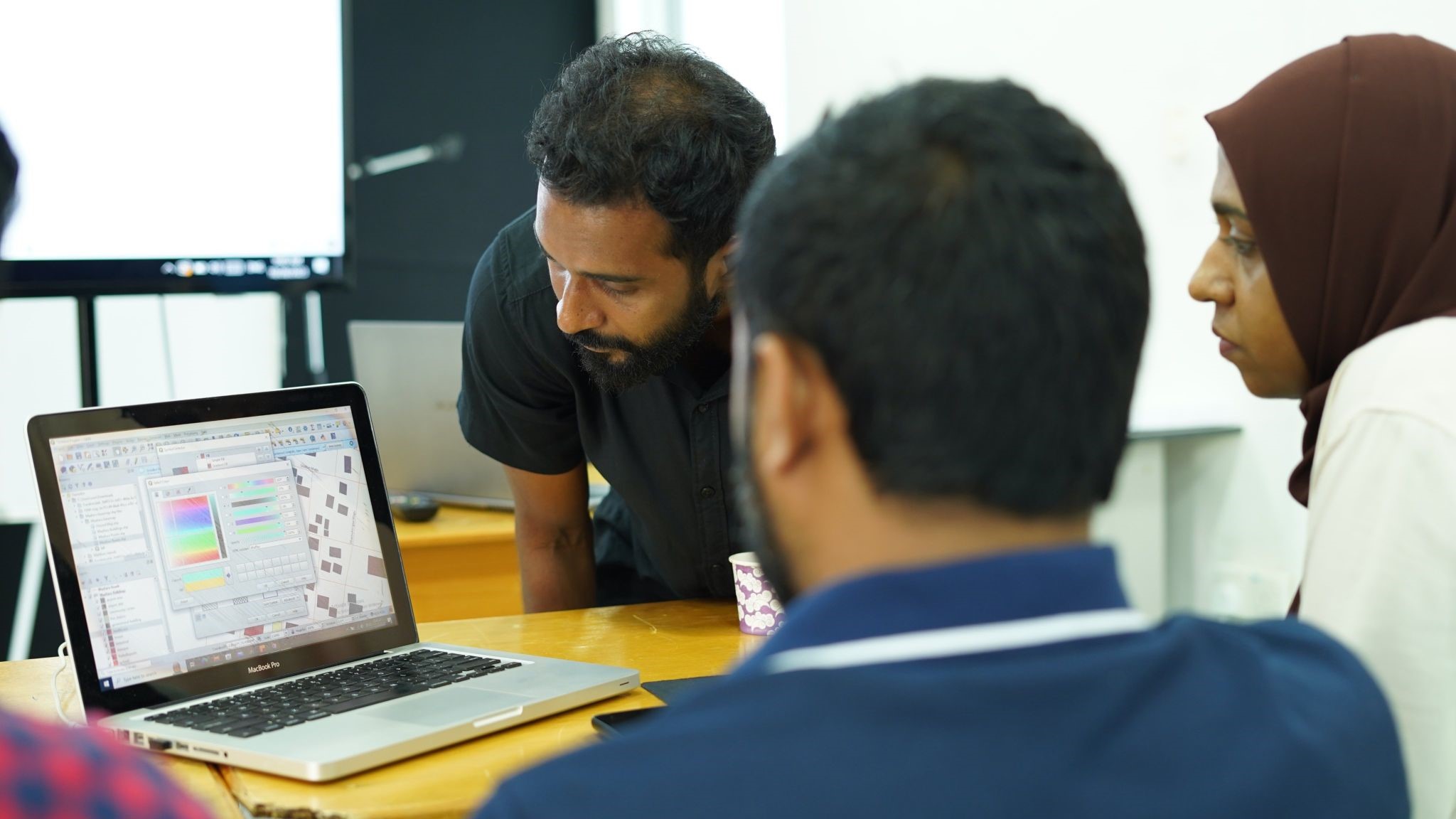
A hands-on training session on Geographical Information Systems (GIS) for participants, equipping them with essential skills to effectively utilize crowd-mapped GIS data.
Participatory mapping would allow us to generate a hyperlocal and rich georeferenced base map of the island. But could CI methods like crowd mapping enable community participation in local DRR and CCA efforts? Can this rich base map be useful to the island council in their local planning? How can this hyperlocal data be made compatible with the existing national data systems? These were some of the many questions we were trying to answer through this experiment.
To test these learning questions, we set up one experiment on the island of Maafaru in Noonu Atoll. The name “Maa-faru” directly translates into “massive reef” in the local Dhivehi language and rings true to its namesake. Thus, from a geographical, as well as social and economic standpoint, this island ticks all the boxes of an interesting case study. It presents a compelling blend of the urban and rural – a composition that is becoming increasingly common across the Maldives.

In the field: Participants engaged in real-time mapping of natural resources and hazards.
We teamed up with a group of volunteers from the Maafaru community. After the delivery of a brief training, the entire island was captured on a free street view imaging application. Using existing satellite imagery, drone imagery and the new street-level imagery, participants mapped the island’s building footprint, road network and critical infrastructure on Open Street Map.
Local Intelligence
While some worked on smartphones and laptops, digitally drawing lines and polygons, others pinned locations on paper maps. Using a mix of digital and analogue activities certainly helped get the most out of all groups. The real intelligence accrued here though was the participants’ innate knowledge of their island and its neighbourhoods, demonstrated as they confidently identified various structures, points of interest and vulnerable buildings on the maps.
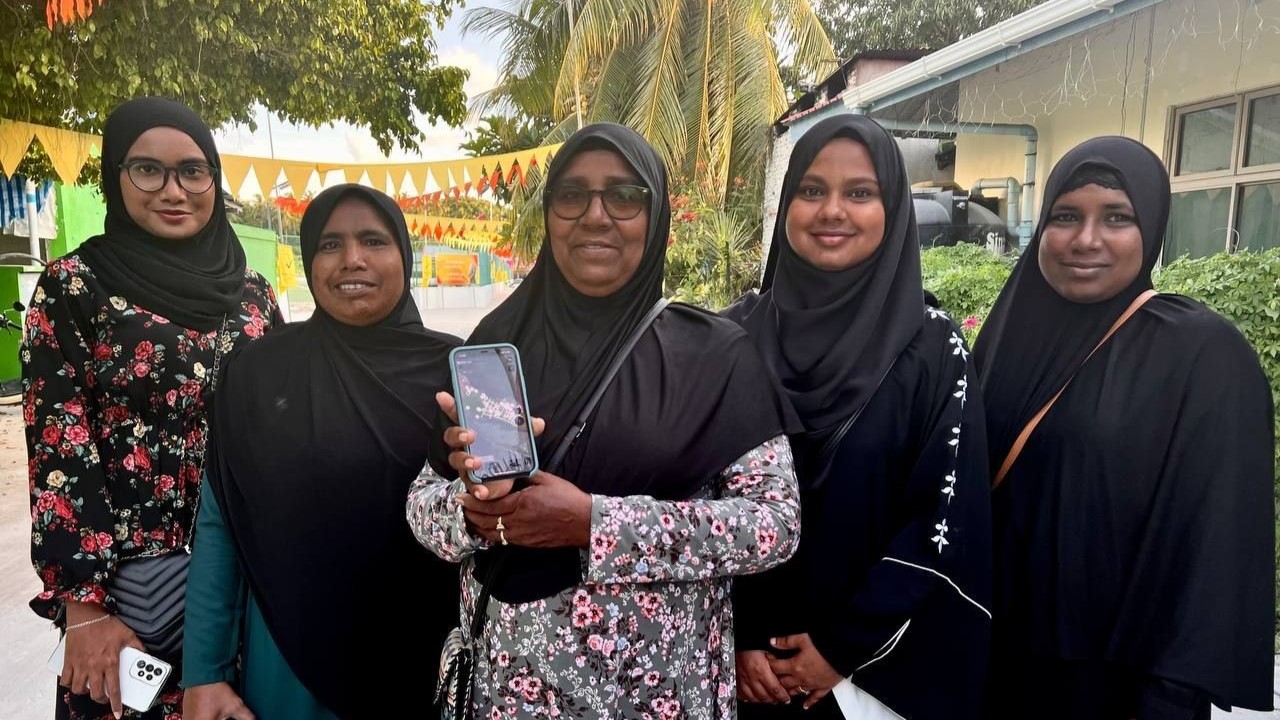
Women from Maafaru participated to digitally map the island using OpenStreetMap and other tools.
“We learned so many new things about the island – most of us have lived here all our life and yet we still do not know everything individually but as a community, we know everything about the island,” two active leaders of Maafaru Women’s Development Committee, Aisha and Leela echoed.
Incredibly, the Accelerator Lab was able to clean the data and generate a GIS base map of the island within a single day. This map then only needed a few volunteers out on the streets to further validate the information and fill any gaps. Over the next two days, with a bigger group of volunteers, a Hazard, Vulnerabilities and Capacities (HVCA) map of Maafaru, capturing areas prone to flooding, erosion, as well as critical and vulnerable infrastructure and more.
Stay tuned for Part 2 of this blog to know more about the learnings of this experiment.

 Locations
Locations